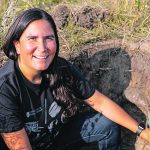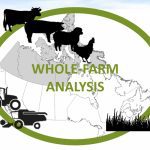Producers can input beef production information and pasture data to learn how to reduce greenhouse gas emissions
Agriculture Canada is updating the model that farms and ranches can use to estimate agricultural greenhouse gas emissions. The Holos model has been around since 2008, and its most current model, version four, since 2020, but the fifth version is now in development. At the Sustainability of Canadian Agriculture Conference, hosted by the University of […] Read moreTag Archives Sustainability of Canadian Agriculture Conference

Indigenous stewardship model urged
Glacier FarmMedia – In scientific and conservation terminology, “ecosystem services” refer to the benefits that wetlands, diverse plant and animal life and wild spaces provide to society. For Indigenous peoples, those things are gifts, an audience was told during the Sustainability of Canadian Agriculture Conference in mid-March. The virtual conference was co-hosted March 12-14 by […] Read more




